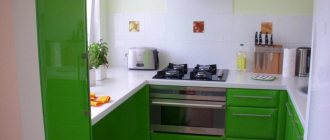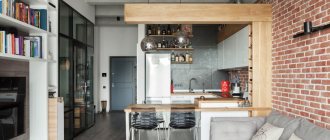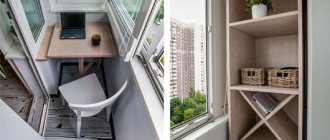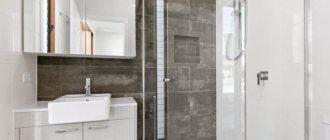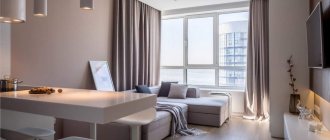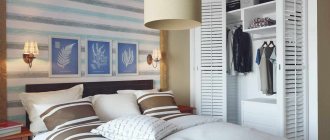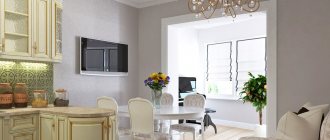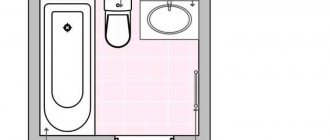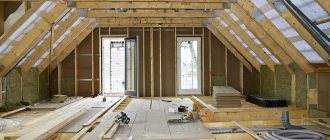Balcony decoration: photo ideas in a modern design
A balcony is an ideal option for those who dream of walking in the fresh air without leaving home. After all, everyone wants a place where they can enjoy the outdoors in good weather. Some homeowners decide not to glass the balcony in order to have constant access to open air. However, if you have little space in your apartment, then a glassed-in balcony, reminiscent of an additional mini-room at home, is the ideal solution. Although this is a small space, it can accommodate grandiose projects. There are many balcony design ideas for every apartment owner.
DIY balcony decoration
It should be noted that very often a balcony decorated with your own hands is in no way inferior to the originality and boldness of the solutions offered by professionals. However, you should not think that absolutely all installation work can be performed without proper experience and knowledge. Some installation processes, such as windows, should be considered technology. If there is no confidence in the results of the work, then turnkey installation can only be performed by construction employees class=”aligncenter” width=”720″ height=”964″[/img]
Step-by-step finishing of the balcony
Usually the balcony is small (5.6 m²). However, you need to draw up a plan for the future interior. Think about how you would like to make the most of this room. Do you need a warm loggia? Or do you just want to protect your balcony from dust and noise? If you have decided to renovate this area of the apartment, you must remember the clear sequence of work. Information on step-by-step balcony finishing will help you take the necessary measures. So, here are the steps to follow:
- Take care of the integrity and strength of the balcony frame structure, which is the basis not only for external and internal cladding, including the installation of future windows.
- Glazing. For installation, it is advisable to use two-chamber aluminum or wooden structures. It is worth considering that plastic is relatively inexpensive, but its performance characteristics are worse.
- It is recommended to decorate the outer part with clapboard or siding.
- Galvanized metal sheets or plywood will help the frame resist weathering.
- Insulation is quite important, so you should take care of waterproofing with a special film, blowing the cracks with special foam.
- It is necessary to install additional strips from the racks.
- Finishing the ceiling, floor, walls with selected materials.
It is advisable to carry out repairs on the balcony in the warm season, as this solution will greatly facilitate and speed up the work. Pay close attention to the weather forecast to ensure that cold or excessive humidity does not interfere with a quality finish.
Glazing and finishing of balconies
If you decide that the balcony will serve as a place to store unnecessary things in your home or as a cozy room in the apartment where you can relax or work, then the renovation should begin with glazing. What type of glazing should I choose? The process is divided into hot and cold. Who cares? It’s worth finding out what this means and choosing the most suitable window installation option for yourself.
Cold frame
This type of work is made of aluminum profiles. It is now used much less frequently than in previous years, but is still considered important. This option is intended for those who do not intend to use the loggia during the cold season. The aluminum profile protects the room from dirt, dust, rain and snow. Such loggias will allow you to relax in comfort in the summer, as well as grow your favorite plants. In winter, this room can be used as storage for workpieces.
Warm plastic panels
A warm loggia includes the installation of plastic windows. Typically a two-chamber package is used. In addition, the walls, floor, and ceiling must be insulated. For this purpose, polystyrene foam (polyethylene foam) or other materials are used. It must be said that a warm loggia significantly expands design possibilities. This method will allow you to combine this room with a kitchen and bathroom, which will increase the living space.
An insulated and glazed loggia on a turn-key basis today can be found in a budget option.
Glass railings
Modern balconies use transparent glass walls. They give you the security of a railing but still allow for significant visibility. With the advent of minimalist lifestyles, the sleekness of clear glass walls is becoming increasingly popular. Cable railings are also often used on these balconies.
Before finishing
Any “dirty” work must be carried out before finishing the upholstery.
Before completing the finishing touches, think about whether you want to remodel the room, insulate it, replace outdated double-glazed windows or window-door frames. All of the above work must be done before facing, so as not to damage its integrity. Remember, an insulated area with reliable steam and waterproofing will preserve the original appearance of any type of finish much longer.
Did you know that the original purpose of balconies was as a safety measure against fires and emergencies? These sites were invented to make it easier for rescuers to evacuate people from multi-apartment birdhouses. Today, this architectural element is used as a storage room or converted from “street” space to living space.
Think about the interior in advance. If there will be a mini-workplace on the balcony, the area should be spacious and bright, without distracting details. A relaxation corner requires warm colors in the decoration, little things like a delicate curtain, wicker chairs, and flower pots.
When the preliminary work is completed, cosmetic repairs begin. Let's consider all the options for finishing the loggia, their advantages and disadvantages.
Balcony decoration inside
Today there is a huge amount of finishing material for balcony repairs. The walls, ceiling and floor can have a stunning appearance with different themes. Just because your balcony is outdoors doesn't mean it has to have a boring floor. Choose a beautiful and functional coating that will last a long time, delighting with its aesthetics and practicality.
What to consider when choosing a material:
- which side of the world is the balcony facing, since not all materials are resistant to prolonged exposure to ultraviolet radiation;
- roofing or lack thereof, some materials do not tolerate precipitation;
- ease of installation of the material, especially if you want to install it yourself;
- method of preservation: some materials should be given less attention, others more;
- maintenance usually also involves additional costs, for example when purchasing impregnation;
- weight: it may happen that the balcony structure will not be strong enough to support heavy materials, you should consult with the designer before deciding to purchase stone or terrazzo;
- price, since you need to pay not only for the material itself, but also for the preparatory work necessary for laying the floor, walls, ceiling, labor or tools.
Floor insulation
There are several floor insulation methods you can use. The first of them is through hot water. In this case, pipes are installed on the floor and connected to the heating system. The height of the floor increases to seven centimeters. This method requires registration of permits with the relevant authorities. The second method is to insulate the floor on the balcony using an electric cable. The screed is mounted, and electrical wires are placed on it. The required process expands the scope of work accordingly. The floor height increases to 5 cm. This embodiment is rarely used nowadays, since electricity is expensive. And finally, the best way is electric film. This flooring has a thickness of 3 mm. He places the screed on top. You can apply any coating you choose, that is, tile, linoleum, etc.
Wall treatment
Usually the walls of the balcony are made in light colors. This solution increases the space visually. Shiny and mirror elements on the walls visually increase the space. This technique is often used by designers when designing small spaces. The wall will not look too boring if you hang a poster or a bright picture on it.
Finishing technology
The multi-stage process of decorative plastering of a balcony involves the following steps:
- work planning;
- acquisition of materials and tools;
- surface preparation;
- creating a starting framework;
- application of material;
- final decoration.
Let's look at the most complex nuances of the finishing process.
Tools
To make the finish look fashionable and aesthetically pleasing, it is important to choose the right tool. Manufacturers offer many options. The main thing is that you always have what you need at hand, and that the tool is of high quality. The “Gentleman’s” set for a plasterer-finisher includes the following items:
- hammer;
- trowel;
- acceleration scoop;
- construction plumb line;
- level;
- rule for leveling the solution;
- several spatulas of different types and sizes;
- graters;
- universals (spatula or trowel for plaster).
The most indispensable tool is a trowel. Therefore, spend your maximum budget on this purchase. This will count as good quality to you.
A falcon that does not fly, or a building falcon, is another useful and necessary tool. This is a light metal shield with a handle in the center measuring approximately 40x40 cm. It is designed to support the mortar during the application, application and leveling of the plaster composition.
A spatula is necessary to smooth the layer. It is better to choose one with a stainless steel blade in the shape of a rectangle or trapezoid. The “Venetian” requires a special spatula. But whatever the finish, the blade of the tool must be perfectly straight.
The rules govern the applied layer and tighten it. Models 2-3 meters long are most in demand.
The texture of the plaster coating depends on the type of trowel. With its help, a pattern is created and defects are eliminated. For a brighter effect, the top layer is moistened with water. So that the working part of the grater is made of polyurethane.
To add color or a special pattern to the surface, a roller is also used. The most practical option is rubber.
Such a universal tool as a stencil does not require imagination or skill at all. A plastic or film tool is glued to the surface using masking tape. The mixture is applied from the edge to the center.
Guns (for the “spray” technique), steel construction brushes (to speed up the process), drills, sponges, mittens, and brushes are also used. The priority is quality.
Surface preparation
To firmly bond the decorative plaster to the surface, you need to prepare it. This is done according to the standard scheme:
- It is necessary to clean the walls from float, dirt and old finishes.
- cracks, crevices, and depressions are sealed with a repair mixture;
- primer is applied;
- Allow sufficient time to dry.
Application of the composition
To decorate the walls of the balcony with decorative material, we perform the following steps:
- Mix the decorative plaster until the composition is homogeneous. A drill mixer is suitable for this.
- Next, you need to take part of the solution onto a trowel and apply it to a section of the wall.
- The next step is to level the decorative mixture so that its layer on the base surface is 3-5 centimeters, no more. A grater or wide spatula is suitable for this.
- As soon as the composition has set, we level it using a metal grater.
- Next we apply the front layer. To do this, it is better to use a fattier mixture containing less filler, but more binder.
- The thickness of the front layer is approximately 2 mm. It all depends on the type of decorative plaster used. In some cases, the thickness of the finishing layer may be no more than 0.5 mm.
Next, we can begin to form the relief. In our example, plaster with a mineral filler was used and the relief was formed quite simply. It was enough just to smooth the plaster applied to the surface with a plastic trowel, and the quartz granules themselves formed grooves and furrows.
Below is a table that will help in forming the surface texture if you prefer a different plaster.
Final operations
This stage of work must begin after the treated surface has partially dried.
To give the surface the desired color, I painted the walls. Although this can be done even if the decorative composition contains pigments. But then the purpose of painting is to give the surfaces a specific shine.
Finishing steps:
- First, apply the base color with a sprayer, brush or roller. Here it is important to cover the wall so that the coloring composition gets into all the recesses, but is not applied in too thick a layer and does not drip.
- Then we perform the pouring. We put a darker color of paint on the brush and paint the entire area of the walls with it. It turns out that the paint flows into the recesses of the plaster, thus forming peculiar “shadows”.
- As soon as both paints have dried, we perform glazing. To do this, use a roller to paint the wall with translucent paint of a light (relative to the main) shade. You can also use a pigment with a pearlescent or metallic sheen.
- Then all this must be left to allow the plaster to dry completely. During this process, we advise you to ensure that the surfaces are not exposed to external mechanical influences, that there is no draft on the balcony, and that the temperature is at the same level. Otherwise the finish may crack.
- After drying, we treat the plastered walls on the balcony with varnish. You can also use wax, but it must be thoroughly rubbed into the surface. But not all decorative compositions can withstand such exposure.
Decoration Materials
After glazing and insulating the loggias, you will create a reliable barrier from dust, noise and precipitation. The time has come to choose quality materials. Balcony finishing allows the use of a wide range of construction materials. What materials are the most popular? This:
- plastic or wooden panel;
- decorative plaster;
- stone;
- siding;
- decorative bricks.
The last option could be natural because it has been very popular in recent years. Decorative bricks have a wide range of colors: from dark brown to white, representing a universal material. It is reminiscent of traditional Russian buildings, and at the same time allows you to implement the most daring and modern projects.
The choice of floor finish should be rethought before laying concrete screed on the balcony, materials have different thicknesses, so you need to plan the height of the gutter so that after laying tiles, wood or anything else, you will step onto the balcony in comfort, without tripping over a high threshold. It is also very important to properly prepare the base for the floor. It is equally important to correctly position subsequent layers that seal the floor so that it is resistant to prolonged precipitation and temperature changes.
Balcony finishing with PVC panels
Interior decoration of a balcony with PVC panels is one of the most common design solutions, since the material has increased strength characteristics. It is made from durable, flexible plastic that is a combination of wood and PVC. The panels have a natural appearance, reminiscent of corrugated wooden boards. This material is more resistant to atmospheric conditions:
- retains its shape;
- does not crack;
- does not peel off under the influence of frost and sun;
- not susceptible to insects;
- does not require maintenance;
- service life is about 35 years;
- Manufacturers provide a ten-year warranty;
- Available in several natural colors that can be combined with each other.
Assembly of PVC panels is very simple. The elements are cut to size, placed on a supporting structure (this can be a lattice or just rubber washers), grafted with a special fastener, and the edges are sheathed with planks. Elements can be cut, milled, making holes in them using woodworking tools.
The fastening system is hidden, so nails and screws are not visible. The elements have a thickness of 28 mm, and together with the base, depending on its height, 60-80 mm. The floor is ready for use immediately after installation. Rainwater flows between the boards. The panels may slightly change color intensity under the influence of sun and humidity, especially in the first weeks after installation, but fairly evenly, so the color change will not be obvious. It is best to wash such a floor with water; stains are cleaned with a brush or a degreaser, which is offered by the manufacturers of the material. In hot weather, PVC panels can become very hot. Dimensions: longitudinal elements - 14.5 cm x 3-6 m; square elements - 44 x 44 cm.
Interior finishing of balcony with siding
This type of finishing is recommended for use on unglazed balconies and loggias. Siding is a metal sheet that is attached to a special frame. The final result of the solid structure will depend on the quality of its installation. To work, you must have a hacksaw for metal and scissors in order to cut sheets of the required size. Grinders are less commonly used for these purposes. It is worth immediately voicing the unpleasant side of such material - rapid loss of color, especially if the balcony is located on the sunny side. Installation of siding is quite simple: the sheets are inserted one by one into the main panel and screwed on top with screws.
Balcony finishing with clapboard
Wood is a natural material, universal, pleasant to the touch, it will go well with the facade in any style. Remember that the floor must be weather-resistant, so only some types are suitable for balconies. It is best to choose an exotic tree, but larch or oak lining is also suitable. Sometimes the wood is impregnated by the manufacturer, but often you have to treat the material yourself after installation. To preserve its color, the lining should be treated twice a year.
If the balcony is not glazed, then in winter you can clear the lining of snow. Even if the surface freezes, you won't have to break the ice, as everything will melt in the spring. Strong insolation and heavy rainfall make the tree grayer, so it is better not to install it on the south side of the loggia without glazing. On the other hand, the lining does not heat up even in hot weather. It is best that the boards are at least 25 mm thick, then they will be durable; the minimum thickness is 20 mm. This material is attached to beams. There must be at least 5 millimeters of gap between the boards so that the wood can work freely. The edges of the balcony are finished with a special board. The floor on the balcony will be 65-75 mm thick. Dimensions of a standard board: about 14 cm x 2.25-5.5 m.
“Warm” plastering of the balcony
If your balcony is well glazed, and you decide to create an additional room in this space, you will have to take care of high-quality insulation. In the case of further plastering, this process has certain nuances, which we will discuss later.
It's worth starting with the choice of material. Expanded polystyrene is ideal for plastering, as it is moisture resistant, quite tough and durable. With such sheets there is no need to install sheathing before covering.
Under no circumstances should you use the popular mineral wool - after plastering, mold will begin to form on the walls!
It is important to choose the right method for attaching polystyrene foam sheets to the wall. A cement mixture or ready-made mastic will do, but the best solution would be foamed polyurethane adhesive - a better alternative to polyurethane foam.
This composition can not only fasten the material, but also seal joints and seams. For additional fasteners, you can choose dish-shaped ones (you need about 5 pieces per 1m2).
Now let’s look at the process of insulation + plastering on the balcony step by step:
- You need to start, as in previous cases, with preparing the walls and thoroughly impregnating them with special compounds;
- It is important to take care of thorough waterproofing of cracks and joints. This can be done using a cement solution with the addition of PVA glue, as well as sizing with waterproofing tape;
- The cold wall of the balcony is tiled first, then the side walls. The surface adjacent to the room is insulated only if the room does not retain heat well;
- Please note that when insulating with sheets, it is important to check the level. The wall facing the street is often tilted forward, and in order to level the surface, it is necessary to make linings that compensate for the deviation from spare insulation sheets;
- Each panel is carefully adjusted to the previous one. In the necessary places, the edges of the insulation are trimmed and rubbed. Vertical seams should not coincide - each row of panels must be shifted to the side!
- You need to control the corners and slopes using a metal square - this is important for eliminating large gaps between the slabs;
- Using facade fiberglass mesh, the insulated surface of the walls is reinforced. The mesh is embedded in the first thin layer of the plaster mixture, and then, after it dries, it is covered with a second layer.
In this case, decorative putty should be applied only after the reinforced wall surface has completely dried. If you notice any unevenness in the form of tubercles, they should be carefully rubbed, being careful not to damage the mesh.
Full video instructions in two parts:
Balcony finishing with stone
Stone is a very durable natural material that blends well with its surroundings, it is timeless and elegant. Unfortunately, it is heavy, requires impregnation at least once a year, is quite expensive, and gets very hot in the summer. As with wood, not all types of stone are suitable for outdoor use. The safest way is to install granite on balconies. Sandstones, travertines and alabasters will be worse, as they can be destroyed by atmospheric factors.
Attention! The popular marble should not be used outside the home because it flakes.
Stone intended for a balcony comes in the form of ready-made tiles or larger elements made to size. It should not be polished because it will be very slippery, so it is advisable to use rough surfaces. Unpolished stone has a less intense color, but special preparations can be used to deepen the color. There is no need to soak granite, although it will be less dirty after this treatment. When cleaning daily, do not overdo it with detergents; it is best to rinse the floor with cool water. If the stone becomes heavily soiled, then every few years it is necessary to carry out crystallization treatment, that is, machine cleaning, which is usually combined with subsequent impregnation of the surface.
The process of finishing a balcony with stone
Stone slabs are laid on cement mortar less and less often, although this is a cheaper method; glue is more often used. As with ceramic tiles, it is applied to both the underside of the panel and the backing. Flexible joint masses with the addition of silicone are used for cementation. The edge of the balcony can be finished with a stone quarter or half shaft. If you decide to cut the tiles, you can polish the edge - this is a very popular solution: stone elements are usually 10-20 mm thick. If you apply stone with glue, the floor will have a thickness of 20-40 mm, depending on whether the concrete foundation is level, and if on cement mortar - 40-50 mm. The sizes that exist in stone tiles are: 45 x 45, 30 x 60, 40 x 60 cm or irregularly shaped elements.
The process of applying decorative plaster
Applying decorative plaster is not the most difficult process. Even a beginner can handle it, provided that the instructions for preparing for work and applying the mixture have been studied in advance.
In this case, special expensive tools are also not needed. Before carrying out plastering work you need to purchase:
- several spatulas of different sizes;
- containers for diluting plaster mixture;
- soft sponge;
- masking tape;
- metal smoother;
- brushes with different bristles;
- rollers;
- mitten for finishing grout.
In addition to purchasing materials and tools, before applying the decorative mixture, it is necessary to prepare the surfaces of the walls. This process is mandatory in any case - both in new buildings and when updating old renovations.
Wall preparation includes:
- Cleaning them from the old coating, as well as a layer of dust;
- Expansion and cleaning of cracks and crevices, sealing them with cement or gypsum mixture;
- Alignment of chips, holes and splitting of clearly protruding tubercles;
- Application of a special primer that protects the surface of the walls from humidity and temperature changes, and even increases the adhesive properties of the material.
You can start plastering only after the primed walls have completely dried. It is also worth remembering that under no circumstances should you apply plaster to exposed metal parts, since rust may later appear on the surface of the wall.
Technologies for applying decorative plaster
It is worth dwelling in more detail on various technologies for applying decorative plaster mixtures. The fact is that the process will differ not only in the case of recreating different textures and patterns, but also in the case of different mixture compositions.
The simplest and most popular method is stretching the mixture. To do this, you need to apply a layer (the larger the fractions in its composition, the thicker the layer should be) with a trowel or metal grater, holding the tool at an angle of 60° to the wall. After leveling the surface, you can form the texture using a suitable tool.
Concrete balcony
If you have a concrete balcony and want to add an interesting touch to the dull material, use the artificial stone method. Concrete can be given the appearance of stone in two ways:
- reactive;
- not reactive.
A reactive finishing method is an acid-based treatment of concrete, creating a marble effect on the surface. Colors will be limited to natural earth tones such as brown and green. Some of these reagents contain metal salts that will catch sunlight, illuminating your balcony. A non-reactive method of exposure is water-based acrylic substances, which are more like paint. They come in a much wider range of colors and are easier to apply. The surface will not be as unique as a reactive stain, but will remain no less beautiful.
Decorative finishing of the balcony with plaster
Decorative plaster is great for decorating a balcony. It has little structural effect as the purpose of the material is to decorate or add dignity to a room in a strong and durable way. Decorative plaster on walls has been used for centuries to add texture to flat surfaces, with the option of being painted in matching or contrasting colors to the wall itself, depending on the desired visual effect. There are many decorative plastering finishes and techniques. Some of them go back to the distant past. Other methods, such as traditional plaster stucco, have a tradition of almost 200 years. Finally, there are many modern techniques, such as adding metallic pigments or textured applications, that can produce very impressive results when decorating a balcony.
Types of plaster
There are a huge variety of decorative plaster on the construction market. Figuring out which mixture is right for a specific purpose can be tricky. That is why, before going to a specialized store, it is better to check a clear list of types of plasters with a description of their properties.
The first way decorative plaster mixtures may differ is the composition of the base. Basic elements give the coating certain properties, for example:
- Silicone makes the coating moisture-resistant and resistant to various weather conditions. Such compositions are suitable for use on open balconies;
- Plaster with mineral elements the composition has high performance characteristics. Minus - it does not tolerate low temperatures, and therefore is not suitable for “cold” balconies;
- Lime compounds perfectly imitate natural stone. But such material is afraid of moisture, and therefore it can only be used in glazed rooms;
- Plasters are suitable for balconies and loggias with high humidity based on plant fibers – they perfectly repel moisture, while being vapor permeable;
- Acrylic or vinyl base It also gives the mixture water-repellent properties. But such plaster is laid down in a very dense, airtight layer.
All bases for decorative plaster coatings are environmentally friendly and safe for use in residential premises. This means that you can even plaster the balcony that is attached to the kitchen, bedroom, or used as a children’s playroom.
Another interesting feature of decorative plaster is the ability to create an imitation of certain materials using mixtures with different fillers. For example, plasters that create the effect of mosaic, shagreen, or oak bark on the walls are now popular.
Designers and highly qualified repair specialists prefer to use so-called modeled (or structural) plaster mixtures. With their help you can create:
- The effect of antiquity or antiquity of the coating;
- Imitation of harvester fabric - mineral pigments in the mixture refracted in light rays make the coating look like silk;
- Cracked coating – it is possible to “play” with the thickness, direction, depth of cracks through the use of different techniques and tools;
- Imitation of wood structure damaged by bark beetle;
- The effect of “soft gold”, which appears thanks to special bactericidal granules. This coating also has good thermal and sound insulation properties;
- Imitation of natural stone (granite, malachite, marble, etc.). The name of this plaster is Venetian; it is considered the most expensive and noble due to its complex application technique and high decorative properties. Not recommended for use on open balconies.
One more type of decorative plaster can be distinguished - flock. It consists of the first layer of adhesive composition and the second in the form of sprinkled multi-colored acrylic chips.
Ceramic tile
The most popular way to finish the floor on a balcony is ceramic tiles. The material can also be clinker tiles and porcelain stoneware. A more complex type are concrete and stone tiles, which are durable, but, unfortunately, expensive. The greatest advantage of tiles is aesthetics and the ability to freely choose patterns or sizes that match the location of the balcony. In addition, the tiles are easy to maintain and do not require special treatment. Unfortunately, they are uncomfortably cold in winter and too hot in summer. When choosing this form of finishing, you should also pay attention to their technical parameters. The material must be frost-resistant, hard, non-slip and abrasion resistant.
Painting
Painted walls look elegant and stylish
This is also a budget method of decoration that does not require expensive materials, special skills, or special tools. All types of surfaces can be painted, including finishing layers.
When buying paint, make sure it meets these criteria:
- Environmentally friendly composition. The paint will be located indoors, so it should not cause harm to the health of the owners;
- Resistance to adverse environmental factors: humidity, temperature changes, exposure to ultraviolet radiation. The coating should not crack, fade in the sun or be washed off with water;
- Vapor permeability . The composition should not prevent air from circulating and retain moisture in the walls to prevent mold from appearing.
Which paint to choose?
- Acrylics are the leaders in popularity. They are harmless, easy to apply, last a long time, have no odor, and dry quickly. They can be mixed together to create a unique color
- Silicone compounds are vapor-permeable and at the same time water-repellent. Stable, rich, contain an antibacterial component against fungus. They take a long time to dry and smell unpleasant, but they last the longest
- Silicate paints are based on liquid glass. They are the most tenacious and therefore durable
- Water-based preparations are easily washed off and are poorly resistant to temperature changes. Suitable for painting ceilings, but not walls
Turnkey balcony finishing: decoration in different styles
Each balcony is a blank canvas that can be designed to suit the personal desires and needs of the property owner. Like any interior space in your home, the decor of your balcony will determine its purpose. One of the main differences between a terrace and a balcony is size. The terrace has a large area for entertaining guests, while the balcony allows for more private time.
Eclectic Design
If your home has a more eclectic style, Moroccan themed balconies are popular. Create a space filled with bright colors such as pink, yellow and green. Deep tones are also popular for this design style. Use large cushions as seating and gold accents in the form of baskets and lamps to create an exotic feel on your balcony. Natural wood tones are the perfect backdrop to support rich colors.
Urban charm
If your balcony is somewhere between quaint charm and industrial style, then decorating the room in a bistro style is the perfect choice. This is a great solution for a home that has a brick exterior and wrought iron railings. The table and chairs can be wrought iron or imitate steel products. This creates a space that is a beautiful place to spend time with friends while enjoying the good weather.
Modern design
If you want a modern balcony, choose simplicity. Color schemes are usually black and white, with one or two pops of bright color. The furniture is defined by uncomplicated forms and tends to the minimum. A characteristic of modern design and minimalism is open space.
Different purposes of a balcony: choose your option
It's no secret that quite often a balcony has domestic functions. In other words, you can store old and unnecessary things. It is worth thinking about whether it is necessary to build a warehouse where it is possible to expand the living space? The right balcony design will help you get even a small but comfortable room. What can you do on the balcony? Consider several options.
Cabinet
If it is difficult to find a place to work in a small apartment, then a balcony is the ideal solution for you. Here you will not be distracted, but will be able to fully engage in your work. This idea is very easy to implement. For finishing, use regular wallpaper or decorative plaster. Naturally, you need furniture: a small table, a comfortable chair or armchair, shelves for documents that should hang above the table. Be sure to provide good lighting for your work when choosing a desk lamp or sconce.
Game room
Suffice it to say that this version is not suitable for very small balconies. If the area allows, then immediately start designing a balcony. Place wallpaper with a bright and clear pattern on the pre-plastered wall. You can draw them with your child. On the floor, if it is not insulated, you need a warm and soft carpet.
Greenhouse
Many women will like the mini-greenhouse. A beautiful greenhouse at home will delight you with a variety of flowers and wonderful aromas, so the room will become a favorite resting place for all household members. It is important to choose the right plants with the right flowering time, and then your balcony can become a container of beautiful flowers throughout the year. The greenhouse design is more suitable for bright flowers as they will blend in with the green plants. You will also need furniture. These can be wicker chairs and a small table.
Resting-place
The balcony is ideal for relaxation. It is enough to make a simple renovation, equipping the place with a comfortable chair and a table, so that you can drink tea in comfort and watch the street during private hours.
Balcony design project
As a rule, they try to develop a design project only for significant rooms. And few people think about developing a design project for a balcony. The maximum that apartment owners are willing to spend on is a design project for a room combined with a balcony or loggia. But few people engage in separate development of a design project, or simply think about it. But in vain.
The designers of our company are able to transform any corner of your home, let it be a balcony, a storage room, or a narrow corridor in a standard apartment, between the kitchen and the main corridor. There would be a room, and design ideas would appear. But a balcony or loggia is far from a small and narrow corridor; there is room to turn around and show your imagination. And whatever the area and shape of the balcony, it can be turned into a very comfortable and functional space.
When developing a design project for a balcony, you first need to decide on its future purpose. Will it remain a place to store things, or should it still be turned into a useful and functional space? There are a lot of options. And in order to settle on any specific one, it is necessary to assess the condition of the entire apartment, find out the interests of each household member, understand what is missing in this apartment and for whom. Or maybe there is not enough space for all residents at once? And based on the answers received, and the general agreement of the whole family, make plans for the chosen new appearance of the balcony, and then repair.
Our designers, when developing a balcony design project, after receiving complete information about the preferences of all household members, are always ready to offer additional planning and interior solutions. This can be a full-fledged common seating area, which can accommodate a small sofa, or a pair of soft small armchairs. You can organize a work area, perhaps relevant for one of the family members. Maybe it’s worth setting up an area on the balcony for drying clothes, with an ironing board, so as not to take up useful space in the apartment. Maybe the mini gym suggested by our employees will suit you perfectly. After all, sports are becoming more relevant day by day.
There are so many design ideas for arranging a balcony that sometimes customers don’t even realize the functionality it can bring to them. And to understand how useful a seemingly useless area can be, contact our design studio. Not only will they give you an idea for using your balcony, but they will also develop a design project that will allow you to get a stylish, modern, and quite functional space.
